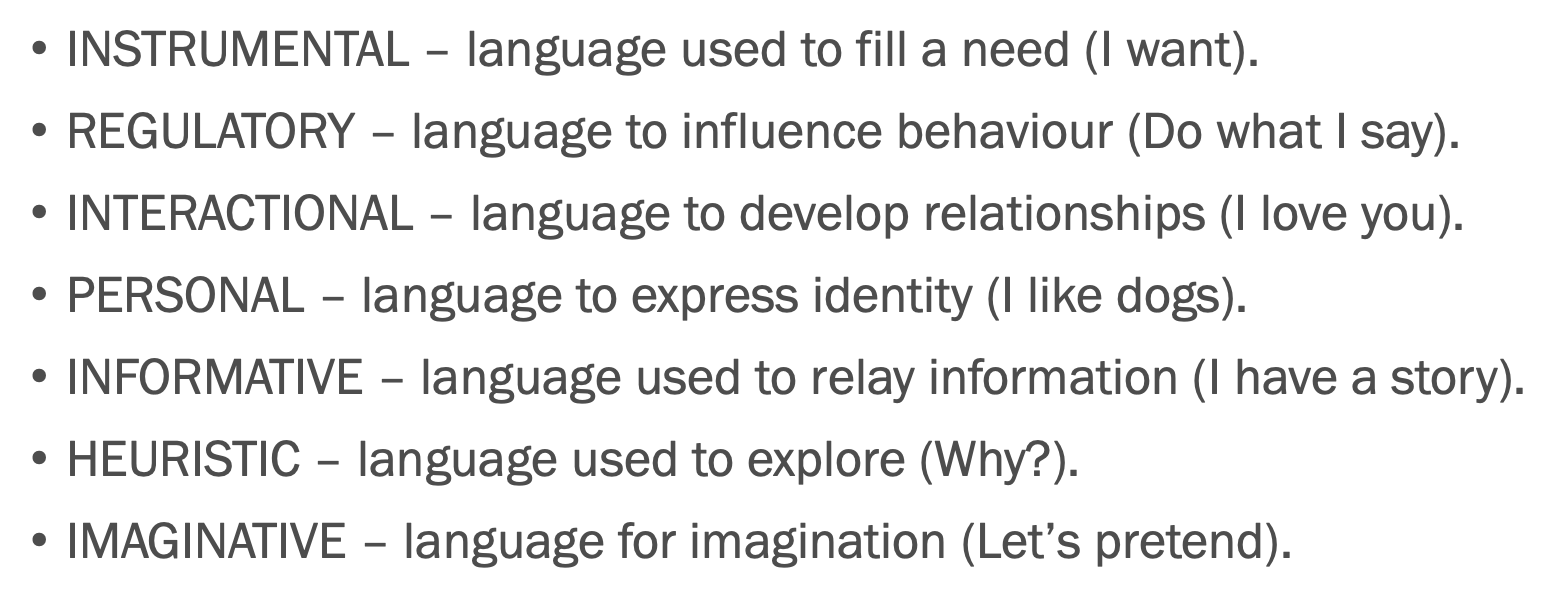Child Language Acquisition
1/20
There's no tags or description
Looks like no tags are added yet.
Name | Mastery | Learn | Test | Matching | Spaced |
|---|
No study sessions yet.
21 Terms
Child language Acquisition
stage occurs from around birth to six months of age. During this time babies begin to communicate in a basic form. They cry to signal needs such as hunger, discomfort and pain. As babies develop more control of airflow to make sounds, they begin to cough, gurgle and coo. They can recognise a primary caregiver’s voice and distinguish differences in tones of voice.
Stages of CLA
prelingustic
babbling
holoprastic
two-word stage
telegraphic stage
multiword stage
Prelingustic
stage occurs from around birth to six months of age. During
this time babies begin to communicate in a basic form. They cry to signal needs
such as hunger, discomfort and pain. As babies develop more control of airflow to
make sounds, they begin to cough, gurgle and coo. They can recognise a primary
caregiver’s voice and distinguish differences in tones of voice.
Babbling
uBabies start to experiment with sound between five and seven months
uThe sounds they produce are varied at first and not necessarily those of their language community; babies around the world produce similar sounds
uEventually, the range of sounds narrows to those they hear around them
uIntonation patterns also emerge at this stage, as infants mimic the changes in pitch they hear in adult speech
uBabbling seems to be innate: deaf children do it too

Holophrastic
uAt around 12 to 18 months, infants begin to produce sounds that resemble words, as they discover that sounds have meaning
uThe first meaningful words are usually concrete, everyday objects that the child encounters: spoon, cat, bath etc
uBy 18 months, most children can produce around 50 words, but understand many more

Two-word stage
uAt around 18 to 24 months, children begin to combine words
uAt this stage, utterances contain only content words: nouns, verbs, adjectives and adverbs that have meaning on their own
Mama go, dog big, bye-bye train
uThere are no function words (like the, on, this) or function morphemes (like –ed for past tense or –s for plural nouns)
uHowever, some grammar is emerging, such as putting subjects and objects in the right places (Dada eat, go zoo)

Telegraphic stage
stage of language development at approximately twenty-four to thirty months of age.
At this stage they communicate meaning by combining content words (words that possess meaning) while omitting grammatical function words;
for example, ‘I want patdoggy’ and ‘I go shops’.
Multi-word stage
stage occurs at around thirty months of age, when children begin to use grammatical function words along with content words.
Their sentences become more complex, demonstrating that their syntactic knowledge has increased.
Phonological development
Morphological development
Lexical development
Syntax development
Semantic development
Discourse development
Morphological overgeneralisation
Semantic overgeneralisation
Universal grammar - Noam Chomsky
Usage Based theory - Micheal Tomasello
Role of the parent
Critical Period Hypothesis
7 functions of child speech
•INSTRUMENTAL – language used to fill a need (I want).
•REGULATORY – language to influence behaviour (Do what I say).
•INTERACTIONAL – language to develop relationships (I love you).
•PERSONAL – language to express identity (I like dogs).
•INFORMATIVE – language used to relay information (I have a story).
•HEURISTIC – language used to explore (Why?).
•IMAGINATIVE – language for imagination (Let’s pretend).
